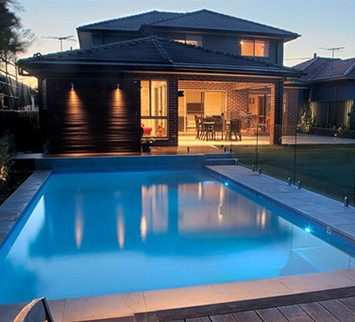

If you’re a swimmer, swimming pools are truly wonderful. Or you may enjoy the aesthetics of a pool in a garden, or just hanging out by the pool. However you use them, there are very specific rules covering swimming pool installation. This covers any excavation, structure or product that is used or is capable of being used for swimming, wading, paddling or bathing (including spa pools) is defined as a swimming pool.
The fencing of swimming Pools is there to protect young children from the danger of drowning in unfenced swimming pools. It does this by requiring owners to fence their pools.
New swimming pool fencing legislation came into effect from January 1, 2017.
Legislation relating to pool barriers and pool fencing is now the Building Act 2004. See Building Code Clause F9 – Restricting access to residential pools.
The Act applies to all residential pools and small heated pools with a maximum depth of 400mm or more.
Pools that are filled or partly filled with water must have physical barriers that restrict access to the pool by unsupervised children under 5 years of age. In the case of a small heated pool, it must have a barrier that covers the pool itself.


A barrier surrounding the pool must have no permanent objects or projections on the outside that could help children negotiate the barrier. Gates must open away from the pool and not be able to be readily opened by children. They must automatically close after opening.
Where a building forms all or a part of an immediate pool area barrier, doors between the pool area and the building must not be able to be readily opened by children and must either emit an audible warning when the door is open or close automatically after use. Windows opening from a building into the immediate pool area must restrict the passage of children.
Where a cover is used as a barrier on a small heated pool, it must restrict children entering while closed and be able to withstand a reasonably forceable load. It must readily return to the closed position and have signage indicating child safety features.
Residential pools, including indoor swimming pools, require a compliant barrier and an inspection every three years, unless they are small heated pools that comply with F9/AS2 (see Pool area safety checklist).
If your pool barrier complied with the Schedule of the Fencing of Swimming Pools Act 1987, then it will probably still comply with the new legislation, although there are some exceptions.


| Item of Compliance |
|---|
| 1. Height of Fence not less than 1.2m or pool is 1.2m above ground with smooth, vertical sides |
| 2. Gap under fence and gate less than 100mm |
| 3. Gaps between vertical cladding less than 100mm |
| 4. Horizontal rails at correct height & spacing minimum 900mm between closest rails |
| 5. Mesh/netting: no opening greater than 10mm for fence 1.2m high or 50mm for fence 1.8m high |
| 6. Gate opens outwards |
| 7. Gate latches automatically |
| 8. Latch on gate self locking |
| 9. Top bolts on ranchsliders |
| 10. Steps into above ground pools removable if applicable |
| 11. Doors and windows giving access to pool area comply |
| 12. Pool area contains only pool equipment |
| 13. Anything permanent outside the pool area that is able to be climbed on is at least 1.2m away from the fence. |
| 14. Has the pool been given a clearance for Fencing of Swimming Pools Act |
| 15. If the pool height is more than 1.2m off the ground then it doesn’t requre a fence. |
Note: This checklist is provided for your convenience but does not cover every situation. Please check with your local authority.